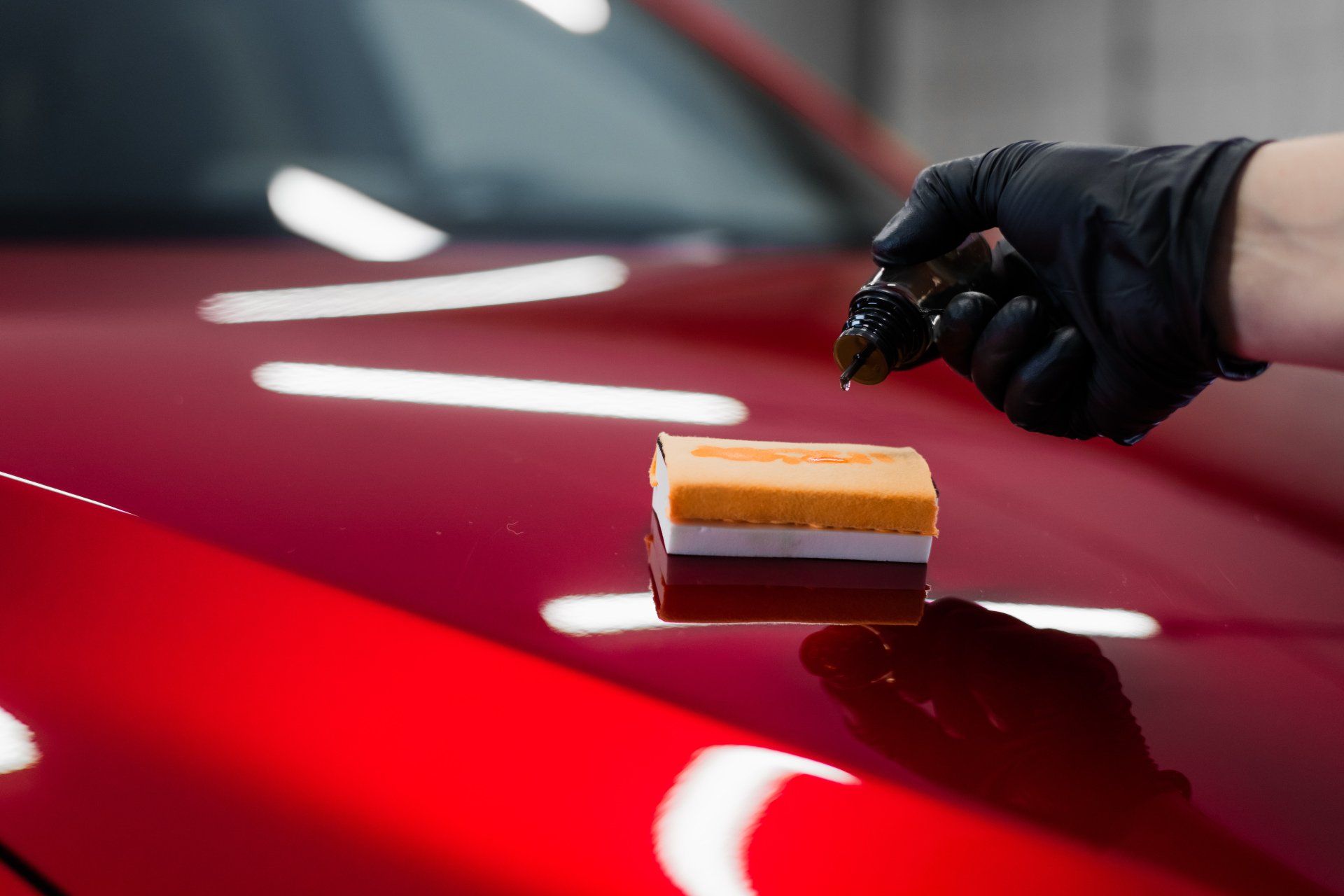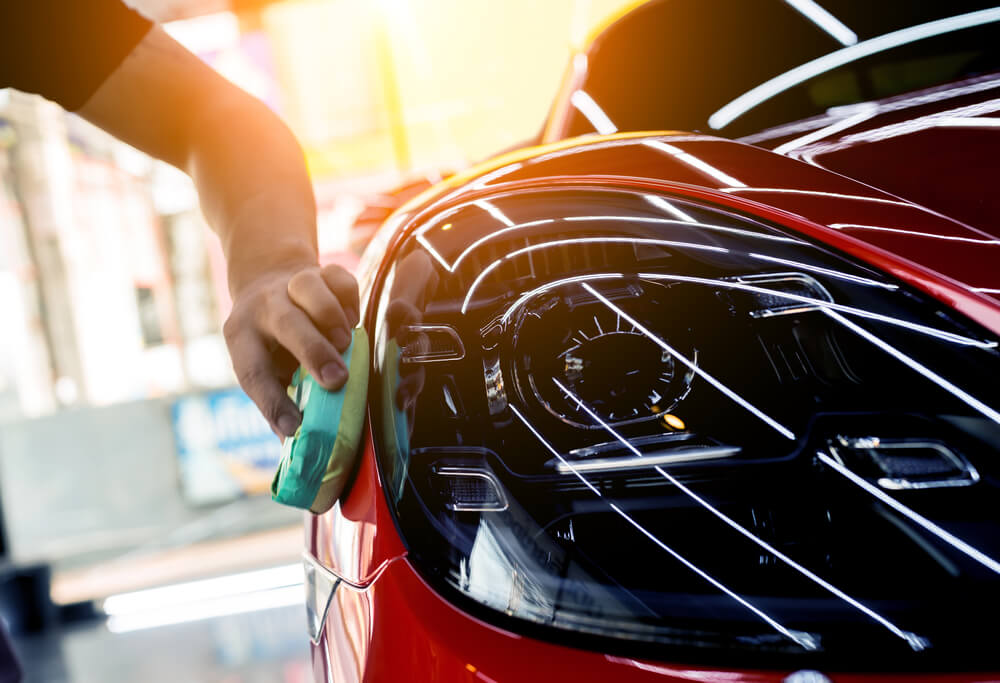Professional Tips for Maintaining Your Vehicle After Applying Ceramic Coating
Professional Tips for Maintaining Your Vehicle After Applying Ceramic Coating
Blog Article
Comprehending the Science Behind Ceramic Coating for Improved Automobile Durability
The science of ceramic finish is revolutionizing vehicle upkeep by providing a formidable shield against severe environmental aspects. At its core, this technology harnesses the power of silicon dioxide and titanium dioxide to form a durable, protective layer. But exactly what makes these substances so reliable in securing an automobile's outside? As we check out the complex composition and application procedure of ceramic coverings, we uncover the keys behind their superior security and long life. Just how does this compare to typical methods, and what implications does it have for vehicle upkeep in the long-term? The responses may surprise you.

Composition of Ceramic Coatings
Ceramic coatings are largely composed of silicon dioxide (SiO2), which is originated from natural materials like quartz and sand. This substance develops the foundation of the finishing, providing its characteristic solidity and resistance to environmental aspects. Along with SiO2, ceramic coatings commonly include titanium dioxide (TiO2) for enhanced UV security and increased resistance to ecological toxins. These nanocomposite materials produce a durable, chemical bond with the lorry's surface, supplying an enduring protective layer.
The formulation of ceramic finishings is a careful procedure where the focus of SiO2 can considerably influence the finish's efficiency. Greater SiO2 web content commonly causes better sturdiness and firmness, adding to the coating's ability to resist scratches and chemical etching. However, the balance of components is critical; excessive SiO2 can make the coating brittle, while too little can endanger its safety properties.
Makers may also incorporate additional substances, such as polysilazane, to improve adaptability and simplicity of application. These additives enhance the finishing's hydrophobic residential properties, making sure water and pollutants bead off the surface area effortlessly. This crafted structure highlights the efficacy of ceramic coatings in securing a car's exterior against a variety of unfavorable conditions.
Application Process Discussed
Applying a ceramic finishing to an automobile entails a number of critical actions, each important to making certain optimal attachment and efficiency of the protective layer - ceramic coating. The procedure begins with a thorough clean and decontamination of the automobile's surface to eliminate dust, crud, and previous waxes or sealers. This step is crucial as any kind of pollutants left externally can prevent the finishing's capacity to bond successfully
Following the first cleansing, the following step involves polishing the automobile to eliminate any type of blemishes, such as swirl marks or scratches. Polishing guarantees a smooth surface area, which is important for the layer to adhere properly and provide an uniform surface. After brightening, a surface area preparation spray is utilized to eliminate any kind of staying deposits and ensure that the surface is completely tidy.

Safety Benefits
Often hailed for its phenomenal safety high qualities, a ceramic finishing offers countless benefits that considerably enhance vehicle longevity. At its core, ceramic finish forms a hard, semi-permanent obstacle over a car's outside, which functions as a shield versus various ecological risks. This innovative layer of security effectively defends against UV rays, oxidation, and fading, maintaining the automobile's original paint and shine. It minimizes the dangers positioned by harmful pollutants such as bird droppings, tree sap, and roadway gunk, which, if left untreated, can result in permanent damages.
Moreover, ceramic finishes show hydrophobic properties, implying they push back water and facilitate a self-cleaning effect. This characteristic minimizes the adherence of dust and mud, simplifying upkeep and cleansing procedures. The layer's resistance to chemical etching further guarantees that the automobile's surface area continues to be unblemished despite exposure to harsh cleaner and toxins.
In addition to these safety advantages, the ceramic finish boosts a vehicle's aesthetic charm by developing a shiny surface that highlights shade depth and clarity. This not only sustains the vehicle's aesthetic allure yet additionally adds to its lasting worth by protecting the stability of its exterior in time.
Comparing to Typical Techniques
Unlike conventional methods of lorry defense, such as shaving or sealants, ceramic finishes use a more durable and long-lasting remedy. Where waxes and sealers generally give a temporary layer of defense, frequently requiring reapplication every couple of months, ceramic finishes develop a semi-permanent bond with the vehicle's paint. This bond develops a protective layer that is resistant to ecological pollutants, UV damage, and small abrasions.
Conventional waxes are primarily made up of natural parts like carnauba wax, offering a shiny surface yet lacking the durable protective top qualities of ceramic finishes. Sealants, while artificial and offering a little much better resilience than waxes, still drop short in contrast to the resilience and chemical resistance of ceramic finishes. The advanced modern technology of ceramic finishes incorporates nanotechnology, which permits them to fill out tiny imperfections in the paint surface area, resulting in a smoother and more hydrophobic coating.
In terms of visit site application, ceramic finishes call for a more meticulous procedure, frequently demanding expert installment to ensure ideal efficiency. This contrasts with the relatively simple application of sealants and waxes, which can be applied at home. The remarkable defense and aesthetic improvement given by ceramic coverings validate the financial investment for those looking for lasting car conservation.
Long Life and Upkeep
How does the longevity of ceramic coverings equate right into ease of maintenance for car owners? The sophisticated solution of ceramic finishes supplies a durable safety layer on the vehicle's surface area, which substantially extends the life expectancy of the vehicle's outside surface. This toughness suggests that the finish works as a guard versus environmental pollutants such as UV rays, bird droppings, and road grime, which can otherwise break down paintwork over time. Because of this, vehicles covered with ceramic items call for much less constant cleaning and describing efforts, thus decreasing upkeep time and costs for proprietors.
Furthermore, the hydrophobic nature of ceramic finishes allows water and other fluids to bead up and roll off the surface area, lugging dust and debris with them. This residential or commercial property minimizes the dig this build-up of contaminants, making regular cleansing a lot more efficient and much less labor-intensive. Owners take advantage of a consistently streamlined, shiny look with minimal initiative. Nevertheless, while the coating itself is resilient, it is not entirely maintenance-free. Normal assessments for damages and occasional reapplication are suggested to ensure the safety layer remains undamaged. Hence, ceramic finishings give an important equilibrium between lasting sturdiness and streamlined upkeep for car treatment.
Conclusion
Ceramic coverings, with their advanced chemical make-up of silicon dioxide and titanium dioxide, offer a powerful barrier versus environmental damages, substantially improving vehicle longevity. When contrasted to standard approaches, ceramic finishings offer premium security versus UV rays, oxidation, and chemical etching - ceramic coating.
The formulation of ceramic layers is a careful procedure where the focus of SiO2 can significantly affect the finishing's performance.Applying a ceramic layer to an automobile entails a number of essential actions, each vital to making sure optimal bond and efficiency of the protective layer.Typically hailed for its remarkable safety top qualities, a ceramic finishing supplies various advantages that dramatically enhance car durability. The sophisticated solution of ceramic coverings supplies a Source durable safety layer on the vehicle's surface, which considerably prolongs the life expectancy of the car's exterior surface.Ceramic finishes, with their innovative chemical make-up of silicon dioxide and titanium dioxide, give a powerful obstacle versus ecological damages, considerably improving vehicle resilience.
Report this page